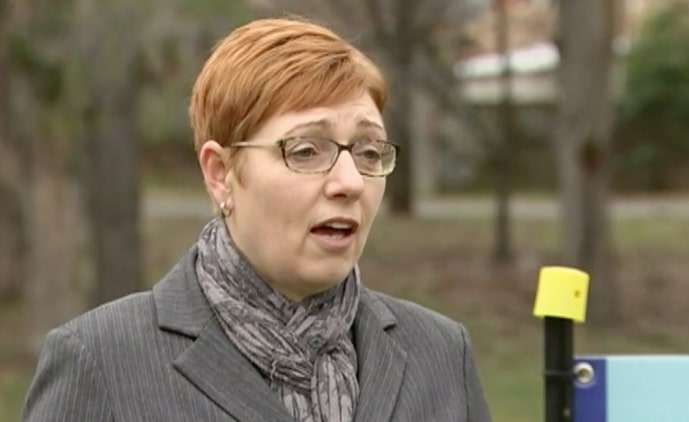
“The chief minister and the planning minister, based on their personal experience, insist that a 120sqm house, in someone else’s backyard, is more than adequate for Canberra families.” JON STANHOPE & KHALID AHMED focus on the ACT government’s failure on housing.
THERE is currently debate in Canberra on the newly announced policy permitting a second dwelling on existing housing blocks in RZ1 zones.
However, builders and developers have criticised the 120sqm house size limit stipulated under the new rules.
Responding to the criticism both the chief minister and the planning minister have, based on their personal experience, insisted that a 120sqm house, in someone else’s backyard, is more than adequate for Canberra families.
Permitting a secondary dwelling in RZ1 zones, on blocks larger than 800sqm, appears to be the government’s signature policy for increasing supply and addressing the shortage of housing and hence its affordability, in Canberra.
In our opinion the policy, just like the rent freeze, is not only likely to be ineffective, but also deeply regressive. It has, of course, delivered, with the stroke of a pen, massive windfall gains to the owners of blocks larger than 800sqm. That wealth transfer to the owners of above median-sized homes is hardly likely to deliver a timely increase in land or housing supply to meet the needs of families, particularly those in the lower-income quintiles, looking to buy or rent an affordable home.
The policy, and the ensuing debate spruiked by the Chief Minister and his ministers, has nevertheless been a convenient distraction from the government’s abject failure to meet its land-supply targets.
We note, for example, that the recently released annual report of the government’s land monopoly arm, the (SLA), appears to have gone unnoticed by local media and has, hence, sunk like a stone.
Under the Indicative Land Release Program (ILRP) Obligations the SLA’s 2022-23 annual report reveals that the agency managed to deliver only 2473 residential dwelling sites against a budget target of 3918, an underperformance of 37 per cent.
It is also, in our opinion, unarguable that the budget target was in any event seriously inadequate having regard to the level of pent-up demand for housing in Canberra and population growth.
The reasons (excuses) provided for the shortfall mainly relate to the “necessary planning work” not being completed. However, one explanation that was proffered was that some 30 sites had been released in 2021-22 and reported in that year. We fail to see how that is a justification for the shortfall in 2022-23. Incidentally the SLA, also failed to meet the 2021-22 program obligations with a resultant shortfall of 18 per cent in that year.
The agency was also set the target, under the program, of supplying 35,945sqm of mixed-use land. The actual result was a mere 7070sqm – a shortfall of 80 per cent against the target.
The annual report provides the following explanation for this shortfall: “The variance is attributed to limited releases, with one block released in Turner (build to rent) in Quarter 2. A Kingston block was scheduled for release outside of 2022-23.”
We are left to presume that this meaningless “explanation” for the 80 per cent shortfall was acceptable to the two responsible ministers, Yvette Berry and Andrew Barr.
Unfortunately, the apparent absence of ministerial oversight is not unique to this agency. The contracting fiasco in the CIT and the failed IT project similarly highlight poor governance and a lack of accountability.
The underperformance in delivering land is unfortunately not limited to 2022-23. Table 1 reveals the serial failure of the ACT government to meet its land-supply targets over the past five years.

Over the last five years, there has been a 16 per cent shortfall in the delivery of residential dwelling sites, and a 41 per cent shortfall in the release of mixed-use land – that is against the government’s stated targets.
We noted above that the targets are manifestly low. By way of comparison, over the four-year budget cycle 2007-08 to 2010-11, the total land supply site targets totalled 15,222 while the actual delivery was 17,236.
By comparison, the recent budget cycle 2019-20 to 2022-23 land supply target was for 14,788 dwellings but delivered only 12,693 sites. Relevantly, while the annual population growth averaged 1.9 per cent during both periods, the actual population growth was 26,069 people over 2007-08 to 2010-11, and 32,241 over the recent budget cycle.

We propose to discuss the impact of land supply and the extent to which it affects prices and economic growth in a subsequent article. Suffice to note here, not only has the local land supply system become far less responsive to demand but that the ACT’s economy would be larger if the government had not only met its own targets, but had set targets designed to actually meet demand and hence stabilise land and housing prices.
The ACT’s coalition government, most notably the Greens, have expressed a strong commitment to affordable housing, public housing and community housing. Regrettably, words are cheap and the ACT government’s rhetoric on housing is not reflected in any meaningful way in the obligations being placed on the land-supply agency and/or in the actual delivery of land for these purposes. These failings are starkly illustrated in Table 3.

The targets for affordable housing, while met in aggregate, are lower than the government’s policy commitment in its affordability plan. The targets for public housing and community housing are pitifully low, and despite having no relationship to actual demand, the targets have not been met.
The target for public housing supply needed to be in the order of 1300 over the five years in order to simply maintain relative stock numbers, excluding the relative decrease from 2011 to 2018.
In relation to community housing, the target set over a decade ago in an MOU between the ACT government and CHC Community Housing, which the ACT government unilaterally abandoned some years ago, would have been 600 over five years.
In any consideration of the state of housing in Canberra the numbers speak for themselves. The bottom line is quite clear, the ACT government does not, despite its constant baying to the contrary, give a hoot about the housing needs of poor, disadvantaged or working-class Canberrans.
Jon Stanhope is a former chief minister of the ACT and Dr Khalid Ahmed a former senior ACT Treasury official.
Who can be trusted?
In a world of spin and confusion, there’s never been a more important time to support independent journalism in Canberra.
If you trust our work online and want to enforce the power of independent voices, I invite you to make a small contribution.
Every dollar of support is invested back into our journalism to help keep citynews.com.au strong and free.
Thank you,
Ian Meikle, editor



Leave a Reply